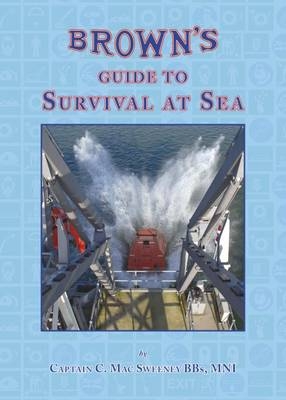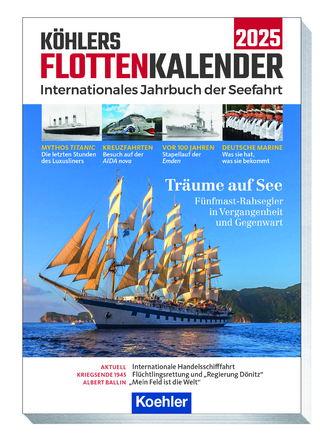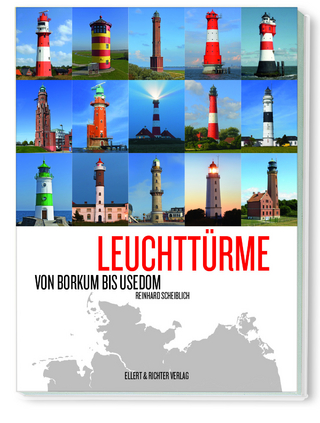
Brown's Guide to Survival at Sea
Seiten
2016
|
Revised edition
Brown, Son & Ferguson Ltd (Verlag)
978-1-84927-065-6 (ISBN)
Brown, Son & Ferguson Ltd (Verlag)
978-1-84927-065-6 (ISBN)
This book is designed to assist seafarers in understanding the basics of sea survival and handling of Survival Craft, and to help prepare and guide them through the shore based PST, CPSC and FRB courses. It should also prove to be a useful guide for those going for refresher training as required under the so called STCW Manila amendments.
All professional seafarers are required to have a minimum level of training in sea survival. Those charged with the responsibility to launch or recover survival craft and look after survivors are similarly required to have a minimum level of training and competence, as are those responsible for operating fast rescue boats. The training required to meet that level of knowledge and competence is carried out both ashore and in training facilities throughout the world all using the requirements from both SOLAS and the Standards of Training & Certification of Watchkeepers (STCW Code). The STCW Code lays out the minimum standards required for seafarers, covering a whole range of competencies - those for sea survival, the operation of both Survival Craft and Fast Rescue Boats are covered under the Personal Survival Techniques (PST), Certificate of Proficiency in Survival Craft and Rescue Boats (CPSC & RB), and the Certificate of Proficiency in Fast Rescue Boats (FRB) elements of the Code.This book is designed to assist seafarers in understanding those requirements, to help them understand the basics of sea survival and handling of Survival Craft, and to help prepare and guide them through the shore based PST, CPSC and FRB courses.
It should also prove to be a useful guide for those going for refresher training as required under the so called STCW Manila amendments. The book follows a logical sequence, laying out the competence requirements from the STCW code and the training requirements from SOLAS, before explaining the reasons seafarers might have to abandon ship, the preparations for abandonment, and what then may affect a seafarer's survival post-abandonment. Guidance and information is also given on a variety of survival equipment including the requirements and operational use of a sample few. Actions to take during the survival stage to enhance survival are also discussed. The final chapter deals with the SOLAS and STCW requirements with regard to the safe operation of Fast Rescue Boat.No seafarer should be faced with a situation where they do not know what to do during abandonment or during the survival phase post-abandonment. The regulations and training requirements are there - but it is the seafarers knowledge that is the key.
All professional seafarers are required to have a minimum level of training in sea survival. Those charged with the responsibility to launch or recover survival craft and look after survivors are similarly required to have a minimum level of training and competence, as are those responsible for operating fast rescue boats. The training required to meet that level of knowledge and competence is carried out both ashore and in training facilities throughout the world all using the requirements from both SOLAS and the Standards of Training & Certification of Watchkeepers (STCW Code). The STCW Code lays out the minimum standards required for seafarers, covering a whole range of competencies - those for sea survival, the operation of both Survival Craft and Fast Rescue Boats are covered under the Personal Survival Techniques (PST), Certificate of Proficiency in Survival Craft and Rescue Boats (CPSC & RB), and the Certificate of Proficiency in Fast Rescue Boats (FRB) elements of the Code.This book is designed to assist seafarers in understanding those requirements, to help them understand the basics of sea survival and handling of Survival Craft, and to help prepare and guide them through the shore based PST, CPSC and FRB courses.
It should also prove to be a useful guide for those going for refresher training as required under the so called STCW Manila amendments. The book follows a logical sequence, laying out the competence requirements from the STCW code and the training requirements from SOLAS, before explaining the reasons seafarers might have to abandon ship, the preparations for abandonment, and what then may affect a seafarer's survival post-abandonment. Guidance and information is also given on a variety of survival equipment including the requirements and operational use of a sample few. Actions to take during the survival stage to enhance survival are also discussed. The final chapter deals with the SOLAS and STCW requirements with regard to the safe operation of Fast Rescue Boat.No seafarer should be faced with a situation where they do not know what to do during abandonment or during the survival phase post-abandonment. The regulations and training requirements are there - but it is the seafarers knowledge that is the key.
| Erscheinungsdatum | 08.12.2016 |
|---|---|
| Zusatzinfo | Colour |
| Verlagsort | Glasgow |
| Sprache | englisch |
| Maße | 218 x 330 mm |
| Gewicht | 1500 g |
| Themenwelt | Natur / Technik ► Fahrzeuge / Flugzeuge / Schiffe ► Schiffe |
| Sachbuch/Ratgeber ► Sport ► Segeln / Tauchen / Wassersport | |
| ISBN-10 | 1-84927-065-1 / 1849270651 |
| ISBN-13 | 978-1-84927-065-6 / 9781849270656 |
| Zustand | Neuware |
| Haben Sie eine Frage zum Produkt? |
Mehr entdecken
aus dem Bereich
aus dem Bereich
internationales Jahrbuch der Seefahrt
Buch | Softcover (2024)
Koehler in Maximilian Verlag GmbH & Co. KG
23,95 €


